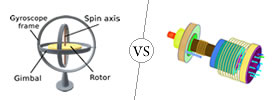Difference between HD and HDX
Key difference: Vudu is a content delivery and media technology company. The website allows users to buy, rent or view HD movies and TV shows over the Internet. At Vudu, users can view the movies and TV shows in one of three formats: SD, HD and HDX. HD entails a resolution that is higher than the standard. HDX is a new format that is released by Vudu, especially for its customers. HDX encodes titles in 1080p HD at 24 frames-per-second.
![]() Vudu is a content delivery and media technology company. The website allows users to buy, rent or view HD movies and TV shows over the Internet. The site was acquired by Walmart in March 2010. At Vudu, users can view the movies and TV shows in one of three formats: SD, HD and HDX.
Vudu is a content delivery and media technology company. The website allows users to buy, rent or view HD movies and TV shows over the Internet. The site was acquired by Walmart in March 2010. At Vudu, users can view the movies and TV shows in one of three formats: SD, HD and HDX.
SD is basically standard, which HD entails a resolution that is higher than the standard. Originally, HD referred to videos that had more than 480 horizontal lines or 570 lines; 480 horizontal lines in North America and 570 lines in Europe. The numbers correspond to the lines of pixels that are displayed horizontally. While the video images of more than 480 horizontal lines or 570 lines are still technically considered as high-definition, in today’s world HD generally refers to images with 720 horizontal lines or more.
The Advanced Television Systems Committee (ATSC) has divided HD into three main categories:
- 720p (720x1280 - 720 lines, progressive scanned)
- 1080i (1080x1920 - 1,080 lines, interlaced scanned)
- 1080p (1080x1920 - 1,080 lines, progressive scanned)
 HDX is a new format that is released by Vudu, especially for its customers. HDX encodes titles in 1080p HD at 24 frames-per-second. This is sort of similar to the technology used in Blu-ray Disc. Vudu utilizes the H.264 (MPEG-4 Part 10) encoding process along with proprietary encoding techniques dubbed TruFilm.
HDX is a new format that is released by Vudu, especially for its customers. HDX encodes titles in 1080p HD at 24 frames-per-second. This is sort of similar to the technology used in Blu-ray Disc. Vudu utilizes the H.264 (MPEG-4 Part 10) encoding process along with proprietary encoding techniques dubbed TruFilm.
Wikipedia lists four main technologies composed in TruFilm:
- Psychovisual Processing: Designed to dampen and eliminate artifacting and pixilation commonly seen in areas of dark sky and water in movies by utilizing a constant algorithmic and visual check, then flagging these sections to be re-encoded.
- Film Grain Preservation: A process which maintains the slight imperfections that the director of the movie decided to leave in the final film. Vudu makes multiple encoding passes over the original film, allowing the final encoded product to contain the original film grain.
- Statistical Variable Bitrate: Ensures optimal video quality throughout the film by allocating a higher encoding budget to high detail and high motion segments of the film, while conserving the budget during slower sequences. With peaks as high as 20Mbit/s and as low as 2 Mbit/s, this process allows for the highest possible video quality streaming over a broadband Internet connection.
- Color Gradient Processing: A unique technology used to tune the picture for optimal display on modern LCD and plasma televisions vs. an older CRT television.
Essentially, Vudu’s HD is optimal for HD displays, whereas HDX is optimized for HD display over the size of 40 inches. However, a disadvantage of HDX videos is that they are larger in size than HD videos, and hence would also take longer to download and stream.
Image Courtesy: iconarchive.com, stratodesk.com









Add new comment